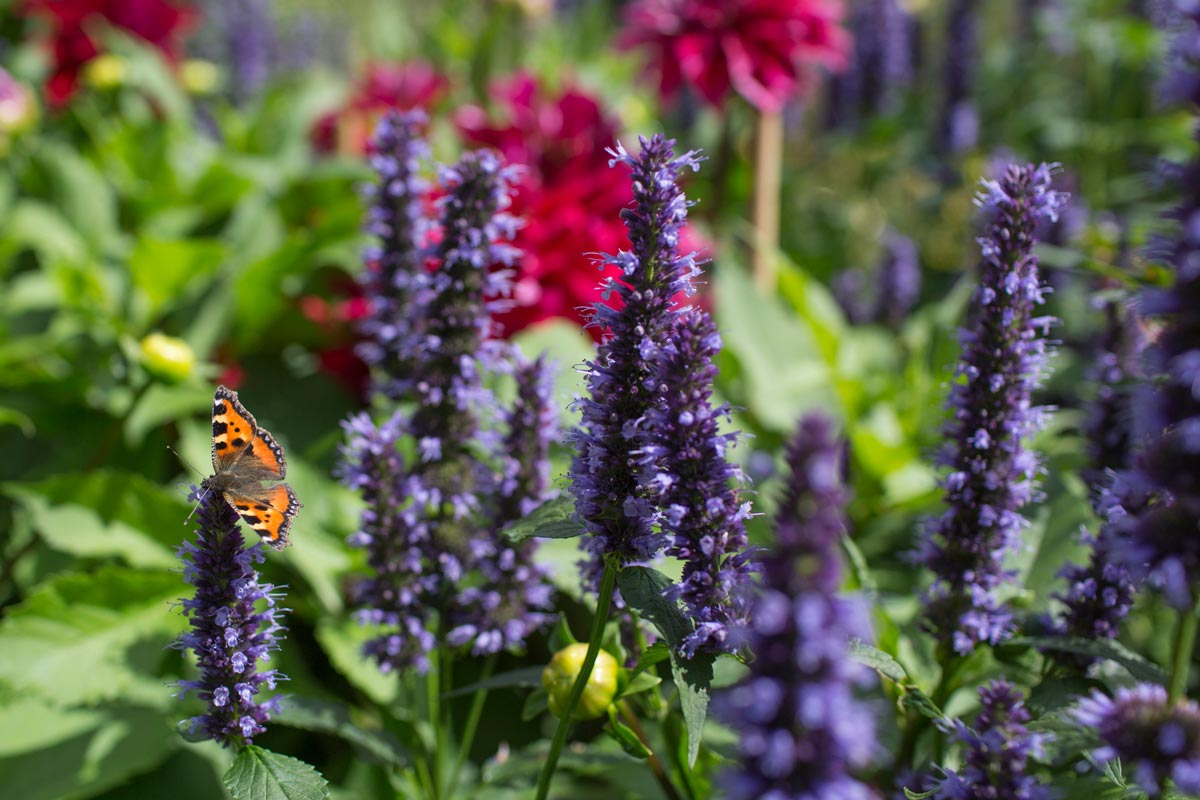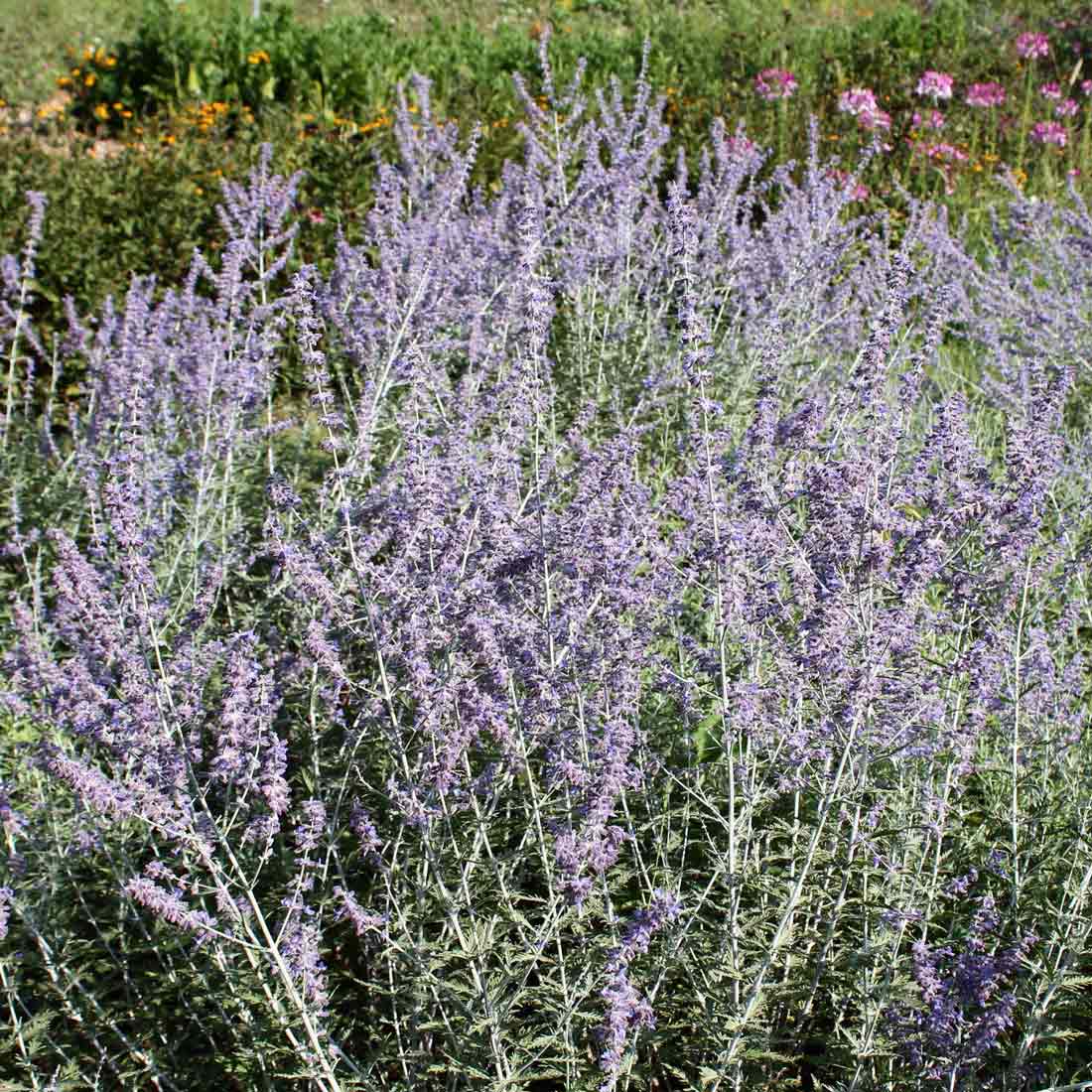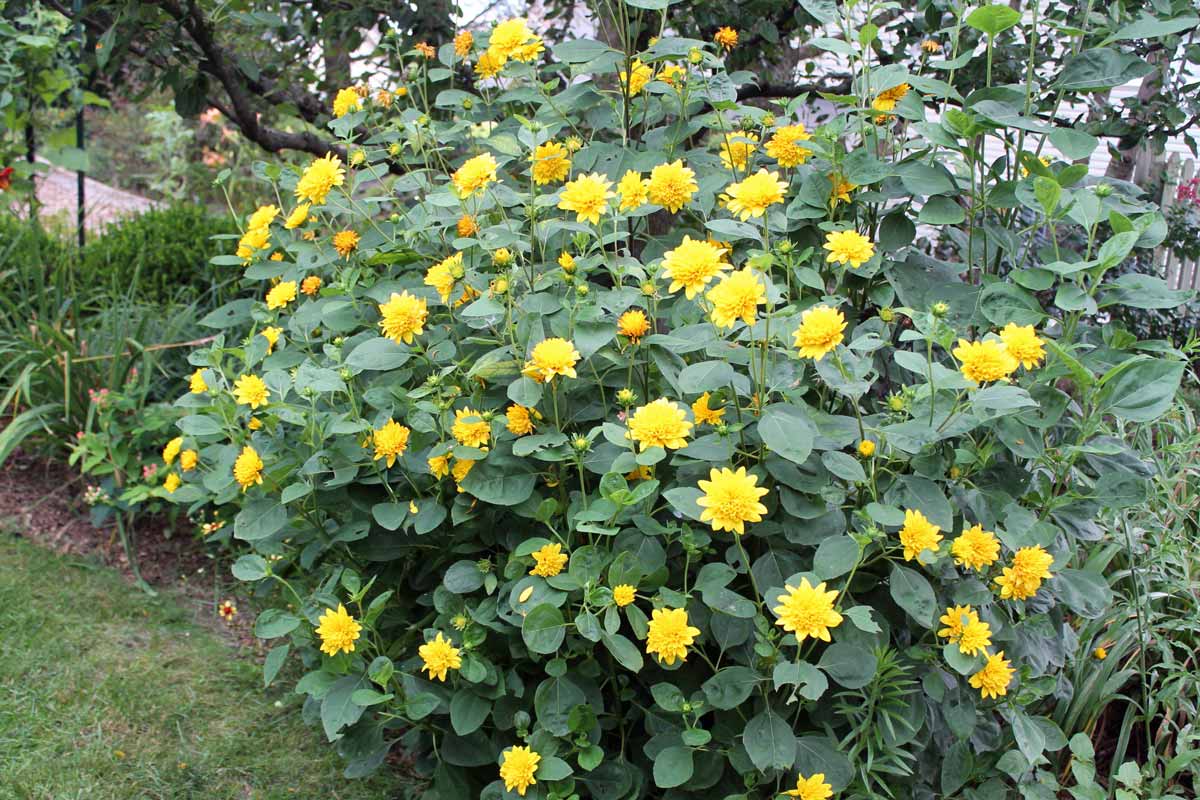Perennial Flowers That Can Take the Heat
Many plants suffer in the heat of the summer. Learn what types of perennials can weather the heat and how you can help your plants survive the summer.
Learn about five different perennials that will prosper during the late summer and early fall season.
Lots of perennial flowers are loved for their beautiful blooms in spring and early summer. But come August, many are looking peaked in the summer heat and the majority are done flowering for the season.
A few, though, are just hitting stride – whether they’re just exceptionally long and energetic bloomers or ones that wait until later in the season to strut their stuff, these flowers are great for awakening your garden at the end of summer.
Here are five of the best perennial flowers that will add some color to your August landscape.

Nicknamed hyssop and sometimes hummingbird mint (depending on the species), this family of mostly two- to three-foot plants is a great choice for hot, dry, sunny areas.
The flower spikes of Agastache bloom from mid to late summer in a range of colors, including white, pink, coral, orange, and rosy-red. The bluish-purple ‘Blue Fortune’ variety is particularly popular.
Pollinators, butterflies and hummingbirds alike love Agastache plants, while deer and rabbits seem to stay away, making this U.S. native perfect for any yard.
A cousin to the low, mounding, spring-blooming creeping phlox, tall garden phlox grows tall and upright, producing clusters of impatiens-like flowers atop three- to four-feet-tall spikes in mid to late summer.
The flowers of this U.S. native perennial come in a range of pastel colors, including white, pink, lavender, and bicolored blends. They flower best in full sun.
When growing this perennial, it is important to know its enemy in powdery mildew, a disease that coats the leaves in a white powdery growth and eventually turns them brown. Look for mildew-resistant varieties, such as ‘Katherine,’ ‘Jeana,’ ‘Robert Poore,’ ‘Shortwood,’ ‘Glamour Girl,’ ‘David,’ and ‘Minnie Pearl.’

Given their height, tall garden phlox are often used as background flowers and in between other plants. AL - Travelpicture / iStock / Getty Images
Another heat- and sun-lover, Russian sage used to be sold as an herb – back when the only choice was a tall, bushy, four-footer that flopped to the side. Eventually though, breeders got to work and developed much more compact varieties that also bloom heavier and for weeks at a time in mid to late summer.
The spiky flowers of this plant are purple to blue-purple, covering the perennial that now stays as short as 18 to 24 inches. Some of the most compact Russian Sage varieties include ‘Denim ‘n Lace,’ Lacey Blue®, and Little Lace™.

Russian sage now comes in much more compact packages. George Weigel
As with Russian sage, breeders have taken this tall and floppy plant and shrunk it into compact sizes that most people find more “garden-friendly.”
Goldenrod gets arching flower spikes of bright gold in late summer and while it prefers sunny, open spots, it will tolerate a bit of shade and occasionally wet soil. And, much like Agastache, this perennial is a U.S. native and pollinator attractor.
Some of the shortest varieties of Goldenrod are ‘Golden Fleece’ and ‘Baby Gold’ (two feet tall) and Little Lemon® and ‘Little Miss Sunshine’ (15 to 18 inches tall).

Bees and butterflies will love the addition of Goldenrod into any garden space. aga7ta / iStock / Getty Images Plus

Perennial sunflowers are bushier than annual sunflowers and produce far more, although smaller, flowers. George Weigel
Even non-gardeners recognize sunflowers, but not nearly as many realize that sunflowers come in perennial versions. With way more cheery yellow or gold flowers than the annual ones that have just one or a few gigantic sunny faces, perennial sunflowers are a great addition to your late summer garden.
Perennial sunflowers are tall – usually four to five feet – but they grow bushier than annual sunflowers and produce gobs of rounded flowers about the size of a quarter to a half-dollar. They do best in full sun and often need staking or similar support.